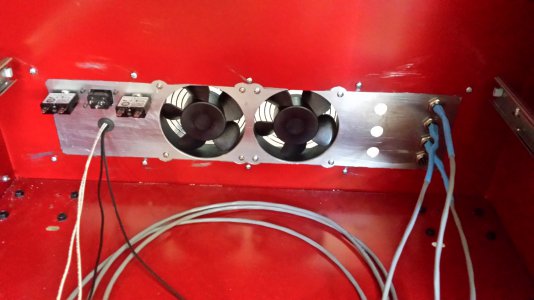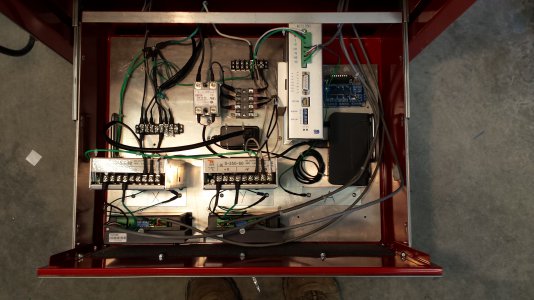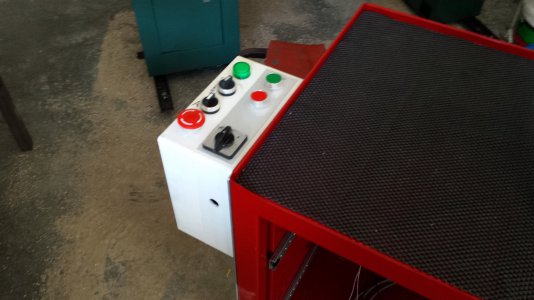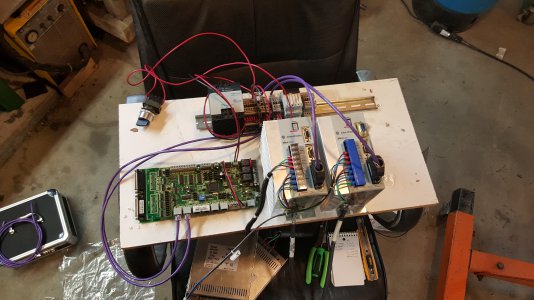- Joined
- Jan 23, 2012
- Messages
- 1,216
i have the mechanical end of a cnc router / machine almost done, now i need to wire all the controls and electronic stuff in a enclosure. I'm looking for photos of others that have done these already. i don't want to reinvent the wheel unless i absolutely.
i have the components necessary but lack connectors to get all the wiring to and thru the wall of the enclosure. the breakout board is straight forward, just a fancy cutout but for the other 16 or so wires, I'm just not sure what i should use. major plug ? a couple major plugs ? one for each motor ? what kind would i need to look for ? i have many feet of small colored automotive wire, is this satisfactory or will this kind of wire pick up signals its not suppose to see ? shielded cable required for each motor ? terminal blocks inside the enclosure ? my brain starts to go crazy with all the variables here. please help if you have time.
thanks much and Merry Christmas to all of you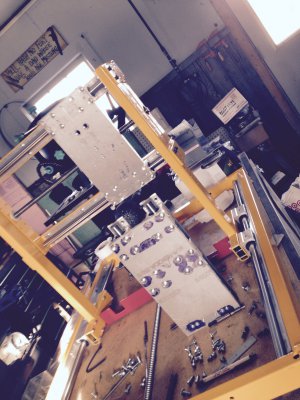 .
.
i have the components necessary but lack connectors to get all the wiring to and thru the wall of the enclosure. the breakout board is straight forward, just a fancy cutout but for the other 16 or so wires, I'm just not sure what i should use. major plug ? a couple major plugs ? one for each motor ? what kind would i need to look for ? i have many feet of small colored automotive wire, is this satisfactory or will this kind of wire pick up signals its not suppose to see ? shielded cable required for each motor ? terminal blocks inside the enclosure ? my brain starts to go crazy with all the variables here. please help if you have time.
thanks much and Merry Christmas to all of you
 .
.

